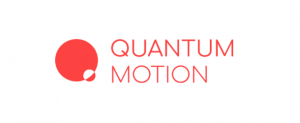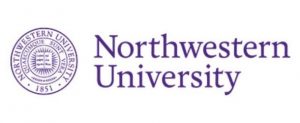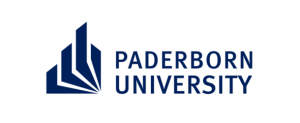Quantum News Briefs October 31: Chicago bets on quantum tech as ‘Next Big Thing’ for its future; Quantum Motion chip milestone brings mass production of quantum chips closer; Northwestern receives a $8.97M Synergy Grant for quantum research from European Research Council & MORE

Quantum News Briefs October 31 begins with Chicago’s big bet that quantum tech it the ‘Next Big Thing’ for its future followed by Quantum Motion chip milestone brings mass production of quantum chips closer. Third is news that Northwestern U has received a $8.97M Synergy Grant for quantum research from European Research Council and MORE.
*****
Chicago bets on quantum tech as ‘Next Big Thing’ for its future
 Bloomberg’s Isis Almeida
Bloomberg’s Isis Almeida
But being at the forefront of quantum developments requires the city to focus on translating science into companies and jobs, said Brad Henderson, chief executive officer at P33, a non-profit founded by former Secretary of Commerce Penny Pritzker.m“We have a top five science setting and we’re not even in the top 10 at translating science into commerce,” he said. “We’re targeting tens of billions of dollars in annual GDP that we expect to have in 10 years. That’s our goal. And tens of billion dollars actually translates into thousands of jobs.”
Chicago, the third-biggest US city already has the country’s longest quantum network — 124 miles (200 kilometers) connecting the US Department of Energy Argonne National Laboratory in the outskirts to the University of Chicago and the Chicago Quantum Exchange, a hub for advancing quantum technology.
Related: Students help demo voting via QKD at Chicago Quantum Exchange event
Chicago has been trying to prop up its beleaguered finances. The bet on quantum is still some years away, but could fuel economic growth as manufacturing continues to decline. Click here to read Almeida’s in-depth article.
*****
Quantum Motion chip milestone brings mass production of quantum chips closer
 Quantum Motion, a UK-based quantum computing start-up led by academics from UCL and Oxford University, has achieved a world-record measurement of quantum devices made on a silicon chip. Quantum News Briefs summarizes the announcement.
Quantum Motion, a UK-based quantum computing start-up led by academics from UCL and Oxford University, has achieved a world-record measurement of quantum devices made on a silicon chip. Quantum News Briefs summarizes the announcement.
The company has been able to place thousands of quantum dot devices, integrated alongside control electronics operating at temperatures less than one tenth of a degree above absolute zero, and all realized on a single silicon chip fabricated in a commercial semiconductor foundry. This lays the foundations for mass production of quantum chips using existing silicon manufacturing processes.
Quantum Motion’s latest chip – called Bloomsbury – is a 3x3mm2 device created by a tier one foundry using the same mass production processes used in standard electronic chip manufacturing. But unlike regular computer chips, Bloomsbury contains thousands of quantum dots into which single electrons can be loaded, one by one, to serve as qubits. In a huge leap for mass characterization of such devices, the team have demonstrated how 1024 quantum dots occupying an area of less than 0.1mm2 can be measured within an industry-leading 12 minutes. All of this is achieved at temperatures of a few tens of millikelvin (-273 Celsius), which is required for the spin qubits to operate with minimum error rate.
“The team have created bespoke ‘quantum primitives’, our version of the transistor, the building block of conventional CMOS circuits, which we can use to trap individual electrons,” said Alberto Gomez Saiz, Integrated Circuit (IC) lead at Quantum Motion. “Integrating these on-chip with conventional electronics, which we designed to work at deep cryogenic temperatures, allowed us to read out thousands of quantum devices with only 9 wires coming into the fridge. It has removed a major bottleneck to scaling.” Click to read original announcement on Quantum Motion News site.
*****
Northwestern receives a $8.97M Synergy Grant for quantum research from European Research Council
 Northwestern received a Synergy Grant from the European Research Council to tackle complex research questions, the University has announced. The funding is a six-year grant worth €9 million, or about $8.97 million, that goes to four principal investigators. The team includes chemistry Prof. Michael Wasielewski, whose research focuses on quantum science.
Northwestern received a Synergy Grant from the European Research Council to tackle complex research questions, the University has announced. The funding is a six-year grant worth €9 million, or about $8.97 million, that goes to four principal investigators. The team includes chemistry Prof. Michael Wasielewski, whose research focuses on quantum science.
The Synergy Grant will go toward the team’s project, “Chirality and spin selectivity in electron transfer processes: from quantum detection to quantum enabled technologies,” which focuses on how to use chirality to control electron spin in quantum science.
“We are delighted that the European Research Council has given our team the opportunity to develop this understanding,” Wasielewski said in a news release. “Harnessing the expertise needed to solve such complex problems benefits greatly from international collaboration.”
The European Research Council reported that about 360 proposals were submitted for the grant, and the council eventually selected 29 winning projects. Read October 27 announcement here from Northwestern U.
*****
German researchers exploring photons as quantum systems set record for entangling six particles
 A collaboration between researchers at Paderborn University’s Integrated Quantum Optics group and Ulm University’s Institute of Theoretical Physics (both in Germany) is exploring using photons as quantum systems, and they recently came up with a new approach to entangle as many photons as possible in large states. Quantum News Briefs summarizes the Laser Focus world article by Sally Cole Johnson.
A collaboration between researchers at Paderborn University’s Integrated Quantum Optics group and Ulm University’s Institute of Theoretical Physics (both in Germany) is exploring using photons as quantum systems, and they recently came up with a new approach to entangle as many photons as possible in large states. Quantum News Briefs summarizes the Laser Focus world article by Sally Cole Johnson.
The team, led by Christine Silberhorn, a professor of physics who specializes in quantum optics at Paderborn, is probing the unique capabilities of time-multiplexed systems in combination with today’s engineered parametric down-conversion (PDC) sources—which generates two-photon states as basic ingredients. And her team’s all-optical polarization qubit memory combined with feed-forward operations zeroes in on the scalability challenge.
Multiphoton entangled states of light—think gigahertz states—enable quantum communication within networks and photonic quantum computation applications. But to successfully apply them for real-world applications, states of bigger size are needed.
In the team’s experimental setup, a small quantum state can be stored until another state is generated, and then the two can be entangled. This enables a large entangled quantum state to be grown particle by particle. Silberhorn’s team used this method to entangle six particles—and set a record for being more efficient than any previous experiments. The previous largest entanglement of photon pairs was by researchers in China, and consisted of 12 individual particles, but creating this state took orders of magnitude more time.
Their new approach can be combined with all common photon-pair sources, so other scientists can also use this method. Click here to read original article.
*****
Taiwan’s NCKU researchers take a deep dive into quantum steerability
The performance of quantum information tasks relies on the resource of “quantum steering,” a quantum correlation that sits between quantum entanglement and Bell nonlocality, and plays a central role in one-sided device-independent (1S-DI) quantum information processing and hybrid quantum networks.
A group of international researchers led by Prof. Yueh-Nan Chen from National Cheng Kung University (NCKU), Taiwan, set out to study the classification problem of quantum steerability using local filters and its connection with measurement incompatibility. “We wanted to study the classification of quantum steerability while trying to understand how to choose the maximal steerability within a class,” says Prof. Chen, Their study was published in Nature Communications.
They aimed to use a local filter K to see how much steerability can be distilled using this filter and explored the classification of two or more assemblages belonging to the same SEO, which were then classified into the same class.
They found that the SEO was responsible for establishing the equivalence classes of state assemblages and related transformations through local filters. Further, the SEO incompatibility corresponded to the optimum steerability over a class. Additionally, they demonstrated the necessary existence of a bipartite state, ⍴AB that offers steerability to an assemblage equal to the incompatibility of the measurements on the untrusted party (Alice). Finally, they looked at the best success rates and probabilities for distillation and dilution in the single-shot scenario.
The study, thus, successfully linked two fundamental concepts in quantum physics—the classification of quantum steerability related to measurement incompatibility and the maximal steerability in a class being the same as the representative measurement incompatibility. Click here to read the complete PRNewswire Release.
*****
Sandra K. Helsel, Ph.D. has been researching and reporting on frontier technologies since 1990. She has her Ph.D. from the University of Arizona.

























